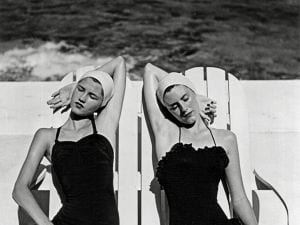Chilean artist Alfredo Jaar was originally trained as a filmmaker, and subsequently as an architect. The prominent context of his training was in minimalism, and this influence is clearly an abiding feature of his aesthetic. Jaar is known to use light and constructed spaces to direct the course of what is and what is not visually apparent. At Yorkshire Sculpture Park, Wakefield, the Underground Gallery and its external concourse are entirely re-characterised by these seminal installations.
The first space of the Underground Gallery hosts mixed media installations, which are highly charismatic for their bold simplicity of form and powerfully poetic content. Audiences are directed through a personal and sensory journey. The Sound of Silence (2005), for example, brings to the fore a visual and textual historical account of an overwhelming image of a young victim of the 1993 Sudanese famine. The image, taken by photographer Kevin Carter, was globally lauded for its poignancy such that the attention it achieved led to aid being channelled to the famine. It also led to Carter’s suicide. Jaar sets within a subtle and poetic context of empathy the narratives and attendant images. Highly relevant as a point of comparison and contrast between our contemporary immersion in imagery and news narrative, the artist explores issues such as copyright, the ownership of “image fatigue.”
In the second space, A Hundred Times Nguyen (1994) examines the phenomenon of compassion fatigue. The exhibit comprises 100 photographs of a girl whom Jaar met when in Hong Kong in 1991, visiting refugee detention centres. Detained in appalling conditions, Nguyen Thi Thuy was one the forgotten Vietnamese boat people. She grew attached to Jaar during his visit when he photographed her five times at five-second intervals. The promise and potential that shines from her face, which varies slightly from image to image, humanises with archetypal poignancy the compassion truly warranted by refugee crises, despite the repetition of the form. In this way, compassion that might undergo fatigue is nourished.
The Garden of Good and Evil (2017), by contrast, is an open air, large-scale exhibition newly commissioned by YSP. At first glance, the visitor is invited to saunter through a fine grove of trees. Within the grove, however, one discovers idealised versions of steel cells, manufactured elegantly. They reference “black sites” – secret detention centres operated by the CIA. The manicured grace of the arrangement of trees with the cages highlights the relatively sheltered and pampered ignorance of Western citizens despite the abuses that are alleged to support that luxury. As an artist who engages with politics throughout his wider oeuvre, this unique piece continues to express a concern with humanity, yet it does so by transcending a sense of elegance. It suggests that despite our inhumanity to other populations, the poetry of a marriage between heaven and hell – personified within the human frame – engages more ethical thoughts when it is written as a mirror-image.
Daniel Potts
Alfredo Jaar: The Garden of Good and Evil runs until 8 April. For more information: www.ysp.co.uk
Credits:
1. Alfredo Jaar, The Sound of Silence, 2006. Courtesy the artist, New York and YSP. Photo: Jonty Wilde.





